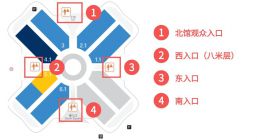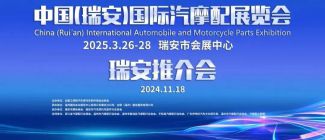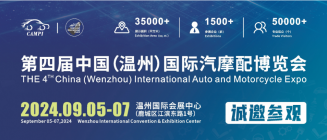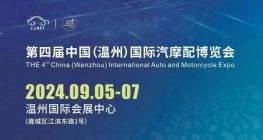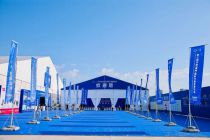Not long ago, the 6th China Automotive Service Industry New Trends Thousand Person Conference and AMR2024 Frankfurt Tianjin Exhibition Official Forum were grandly held at the Marriott Hotel in Tianjin Convention and Exhibition Center. Andy Volcker, CEO of Volcker's after-sales service expert, gave a wonderful speech on the latest trends in the development of the European automotive aftermarket. The following is a transcript of the speech.
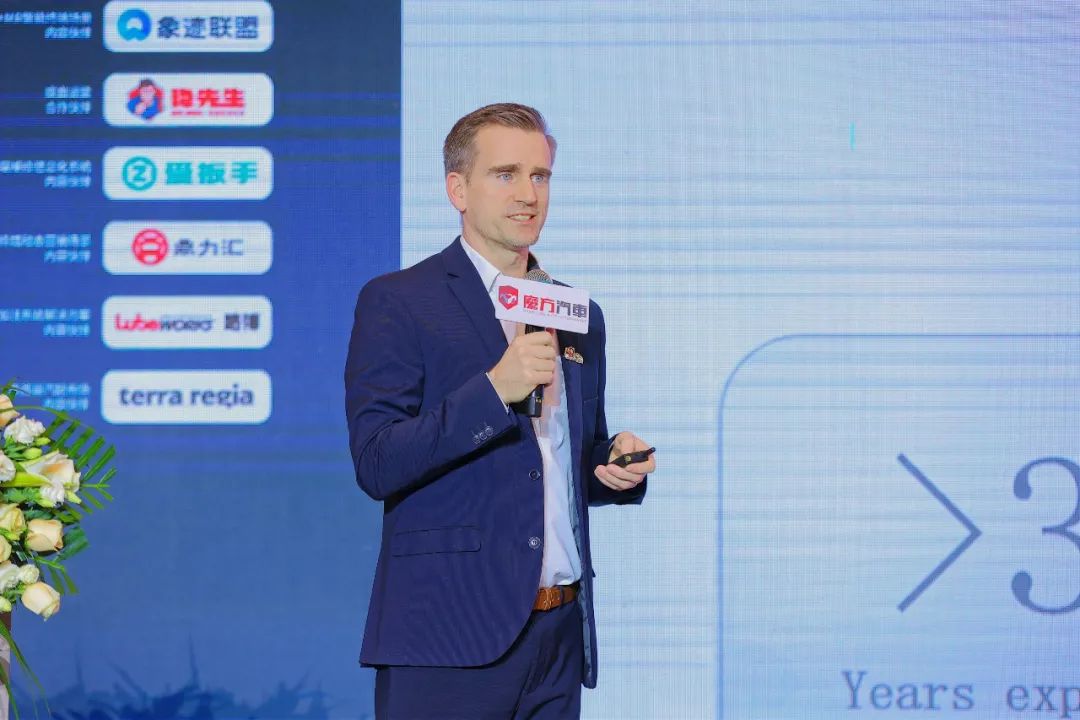
Thank you very much for the opportunity to communicate with everyone. First, let me tell you about our company. Volcker after-sales service is a marketing and consulting research institution, headquartered in Cologne, Germany. The company has been operating for 30 years, focusing on the automotive aftermarket and increasingly valuing independent aftermarkets, including the European market and independent OES. We mainly engage in market insights, research, consulting and other market activities, conducting market research including component and aftermarket maintenance, and providing databases.

Let's take a look at the latest trends in the European aftermarket. The aftermarket is very large, and it is very difficult to fully grasp it. My main focus is on the trade of automotive parts.
In Europe, firstly, the trend of electrification is very obvious. Some Chinese OEM manufacturers have entered the European market and combined it with e-commerce and digitalization in the aftermarket. Of course, this trend is not the latest. From our perspective, independent brands are a very new trend. The integration and restructuring of the automotive parts market and trade organizations is currently a hot trend that will have a significant impact in the future, and it is also something that everyone needs to understand.
Firstly, let's take a look at the trend of electrification. Currently, all players in Europe are paying attention to the transformation of electrification, especially the production enterprises of parts. They are constantly accumulating profits to win this transformation war. They will lay off a large number of employees in the future to prepare for the transformation. They know that this transformation will definitely come, so they should prepare in advance now.
In fact, they all have their own research and development schedules, and traditional businesses are bound to shrink in the future. I think this is a very crucial point. That is to say, currently these manufacturers are still doing well, with high profits, but they are ready for transformation. In the past three years, we have seen a very obvious trend in electrification, but in fact, when we look at the total quantity, the total quantity in the market, especially the pure electric vehicle ownership, is still very low, less than 1.5%. If the current development curve is continued in the future, there is no doubt that the proportion of pure electricity will increase. However, we believe that this trend may not be sustainable at the moment. Our own forecast for 2024 is relatively conservative, considering that many government subsidies have already declined and the charging infrastructure is not mature. These are limiting factors, and the future curve may not be as steep, and I think we need to consider some unique factors.
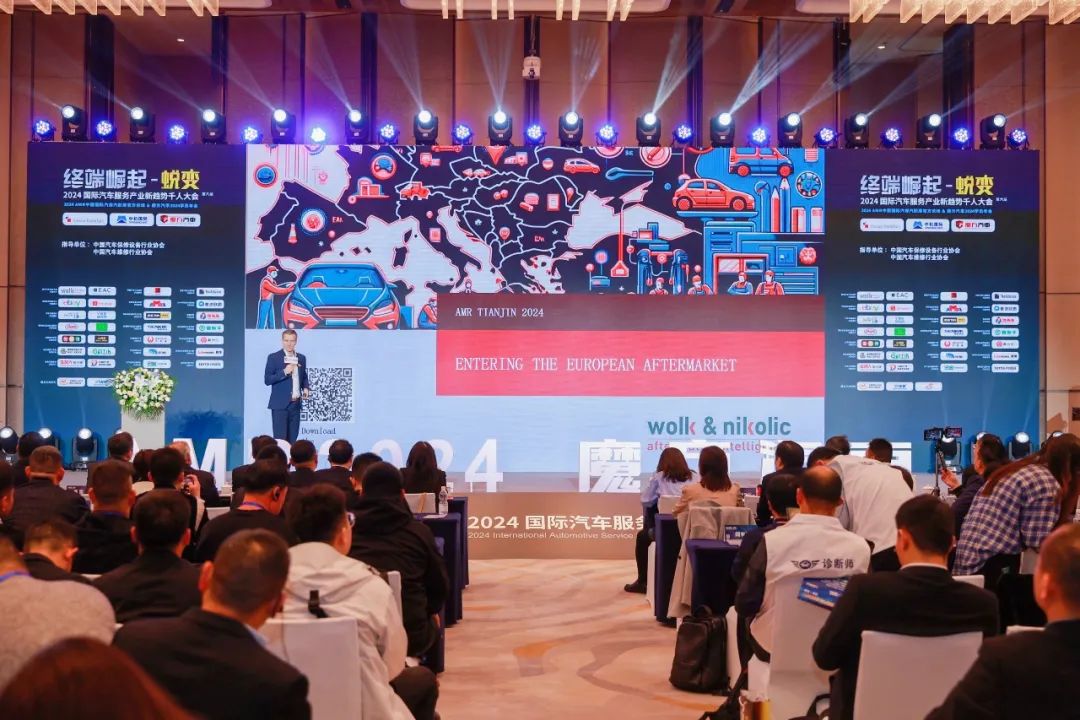
Tesla and some other host manufacturers are now hoping to find ways to offset the decline of government alternative policies, such as withdrawing some new models from the market, playing price cards, and directly giving this car to car rental platforms. They will place orders of 100000 or 200000 yuan each time, which can dilute the cost of the price. In fact, after some behavior, the prices of the second-hand car market have already collapsed because a large amount of new cars are given to leasing companies, which actually lowers the price. This only means that the electric vehicle sector is currently growing, and this trend is irreversible. However, the growth curve will not be as steep as it is now, and it will grow in a relatively stable way. Moreover, the proportion of diesel gasoline in the overall car ownership is still mainstream, and diesel cars, like diesel cars, are constantly shrinking. Internal combustion engine driven vehicles will still exist, still being the dominant model in terms of total power range in the total car ownership.
The situation of Chinese new forces in Europe is as follows: the wave of foreign brands appearing in the European market - in the 1980s, Japanese brands entered Europe on a large scale, followed by Korean brands. At that time, Europeans believed that European cars were among the top tier in the world, but in fact, the host manufacturers were also doing very well in the aftermarket of Europe. But since 2020, Chinese host manufacturers have entered the European market with a wide range of channels, and their solutions have even reached the post market.
From the perspective of the host factory, sales channels should be established while also having aftermarket support. We need to have a long-term strategic vision for the aftermarket, and from the perspective of component manufacturers, we can also look at different waves. Since the 1980s, we have noticed the emergence of some independent aftermarket suppliers, because in the past they had to be original suppliers. Later, they developed their own independent brands, and in the future, there are also some companies called repackaging manufacturers or integrators, which means that they do not build their own factories to produce, and their product lines are very limited, but external procurement management is more refined.
Later, global procurement and private brands emerged, as well as self owned brands. In addition, there were also Chinese original factories, and many parts were also benchmarked against the original factories. Subsequently, Chinese car companies also entered Europe. In reality, the next step for enterprises is that Chinese parts production enterprises should enter Europe together with host manufacturers, not just hiding under other host manufacturers to provide them with parts, but building their own brands. But this requires corresponding market information, and relying solely on oneself is not enough. Professional market information is needed, including how to build sales channels there and what marketing strategies are, all of which require external support.

The next trend involves electronic and digital commerce, as well as the creation of self owned brands, which involves what kind of players or whom to serve. If you are a second product line or a mixed brand, in fact, all OEMs have their own platforms and mixed platforms. Brands like Maxi and Bosch actually purchase parts directly from other production companies, and there are also packaging companies that have their own second tier brands.
In addition, there is the group of wholesalers, and a few years ago, even some multinational trade organizations established their own private brands. Why do we need a brand? Only after having a brand can we position it for consumers, and only by seeing the brand can we know whether this thing is trustworthy or not. And, in the absence of more product information, purchasing decisions will only be considered when the brand is visible.
After the rise of the e-commerce market, the dazzling situation of private brands in the past has disappeared because they can be directly compared online, and the price difference can be easily compared. Of course, a cheap brand and a high-end brand used to have a price difference, but now with e-commerce, everything is very transparent and there is no information asymmetry. In the past, they claimed to be luxury brands while others were cheap brands. Now, with the advent of e-commerce, the gap between them has been bridged. Therefore, some new brands also have opportunities to enter the market.
When a brand wants to enter the European market, such as a well-known brand, it is easy to enter. For example, GSP's drive crankshaft has been very successful in entering the European market and has had a corresponding impact in the market because it has not disrupted existing channels. But if the existing channels in the European market originally produce transmission crankshafts, then entering this product with its own brand requires creating a relatively long-term strategy.
Next, let's talk about the European e-commerce market. For example, Autodoc is a single e-commerce platform in the European market. Its revenue has been increasing from 2013 to last year, initially only 13 million euros, but now it has achieved a revenue of 1.2 billion euros. This is a very impressive enterprise. If we look at other platforms, we will find some differences. Autodoc is basically a dominant platform, while other platforms can allow brands to enter the B2B market, and brands have started to enter the B2B market. Initially, they were completely B2C, but now they need to enter B2B. After entering B2B, they will actually have a competitive relationship with traditional distributors, and they need logistics capabilities to serve a certain store.
What we cannot ignore is that e-commerce will present a completely different situation in Europe. For example, Amazon is the largest market, but there are also other market trading venues in Europe, such as eBay. For spare parts companies looking to enter the European market, eBay is clearly a good entry point, as e-commerce has the greatest market potential and has already covered many countries. The self owned brand provided by enterprises on eBay makes it easy to expand business on eBay with relatively high affinity and diversified products. So for enterprises that want to enter European e-commerce, it is important to choose a platform and conduct relevant construction on the platform and market, including what kind of sellers, categories, categories, brands, pricing, etc., all of which need to be studied. These are also the building capabilities that our company can provide to everyone.
Next, let's analyze what will happen after the integration of the European aftermarket. In 2011, we could see that the top eight major distributors had a revenue of approximately 5.2 billion yuan. Now, this amount has increased four times, which means the revenue has reached 20.1 billion yuan. This actually indicates that most of the purchasing power is increasingly concentrated in a small number of large enterprises. This actually puts a lot of pressure on manufacturers of automotive parts, especially for high-end and large European aftermarket entities. They will also be increasingly squeezed, and the large purchasing power will bring them some pressure. Therefore, we will see more and more buyer teams flowing to top ranked distributors.
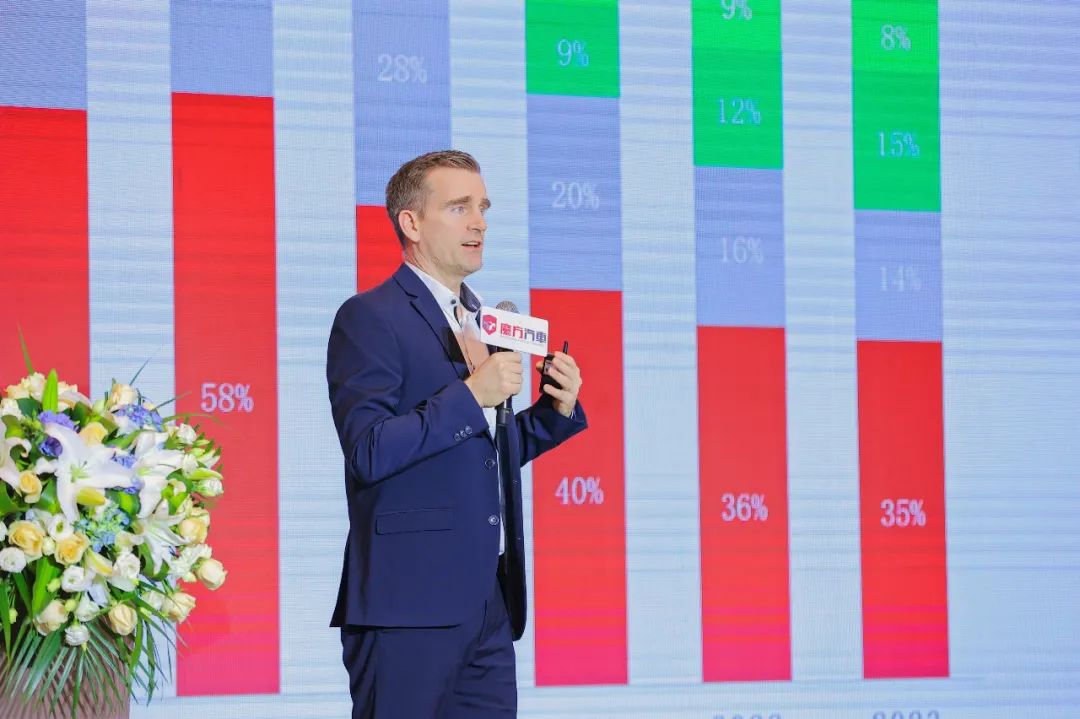
Next, let's take a look at the last two topics, OEM aftermarket and independent aftermarket. In terms of the aftermarket in Europe, especially in the independent aftermarket, the volume continues to rise, and its trend will continue to maintain in the coming years. We can see that the number of cars in stock continues to grow, but the sales of new cars have declined since 2020, and this is true worldwide. This means that the corresponding age of cars in stock is now 12 years, while in China it was previously heard to be 6.5 years.
For the independent aftermarket, these old cars or vehicles with a certain age increase our opportunities because they are likely to enter repair shops in the independent aftermarket, rather than authorized stores. Our insight shows that the largest source of revenue comes from cars with a car age of 8-10 years. In fact, many countries have already reached their peak, which means that the aftermarket in these countries has a car age of 13-14 years. In this case, the number of independent aftermarkets will decrease at this time, or at least the potential will not be great.
The post independence market has reached its peak, and under this trend, there is a fact that the number of OEM OEMs has decreased. This decline has been evident since 2012, and the network of dealerships has also been declining. However, in the past few years, OEM OEMs will have some new systems, such as OGM systems, so they are actually breaking away from some partners. Therefore, more and more cars will enter the post independence market, which will accelerate our development in the post independence market.
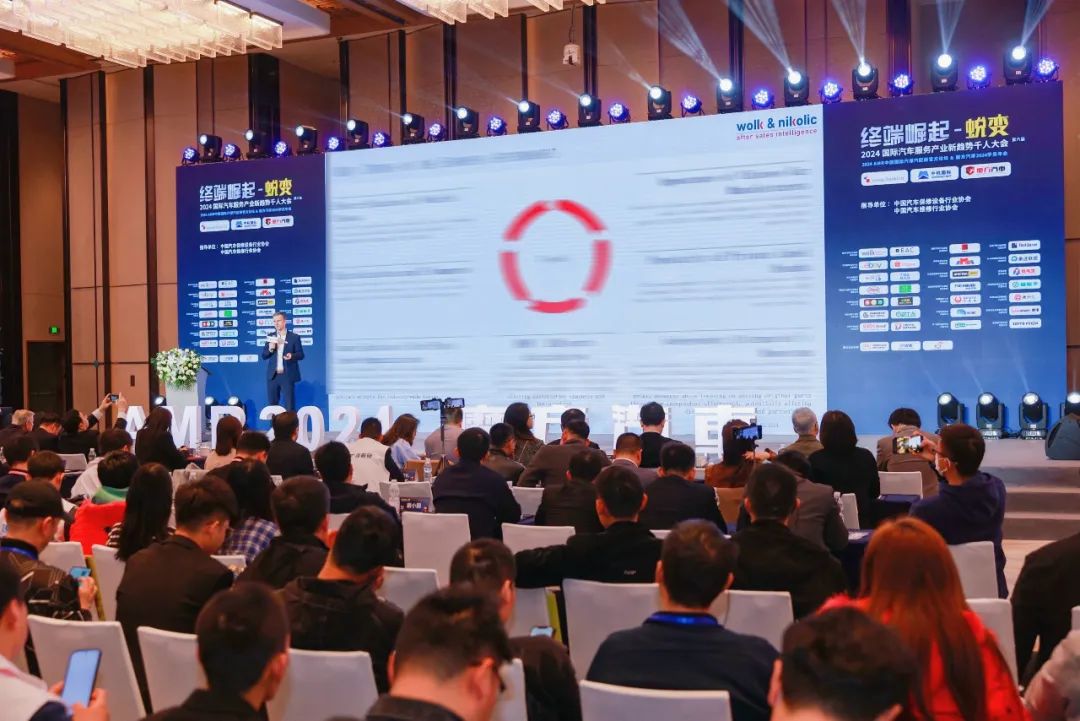
Host manufacturers do not do nothing, and they also hope to strengthen their efforts in the independent aftermarket, so they will sell some of their original accessories to OEM manufacturers. We have also seen some cooperation between companies before, and we will continue to follow up and observe what new effects will be brought in this process.
AMS2024 Exhibition Guide | Comprehensive Exhibition Guide, Don't Miss the Exciting Events Online and Offline
Notice on Holding the Rui'an Promotion Conference for the 2025 China (Rui'an) International Automobile and Motorcycle Parts Exhibition
On September 5th, we invite you to join us at the Wenzhou Auto Parts Exhibition on a journey to trace the origin of the Auto Parts City, as per the invitation from the purchaser!
Hot Booking | AAPEX 2024- Professional Exhibition Channel for Entering the North American Auto Parts Market
The wind is just right, Qianchuan Hui! Looking forward to working with you at the 2024 Wenzhou Auto Parts Exhibition and composing a new chapter!
Live up to Shaohua | Wenzhou Auto Parts Exhibition, these wonderful moments are worth remembering!
Free support line!
Email Support!
Working Days/Hours!
